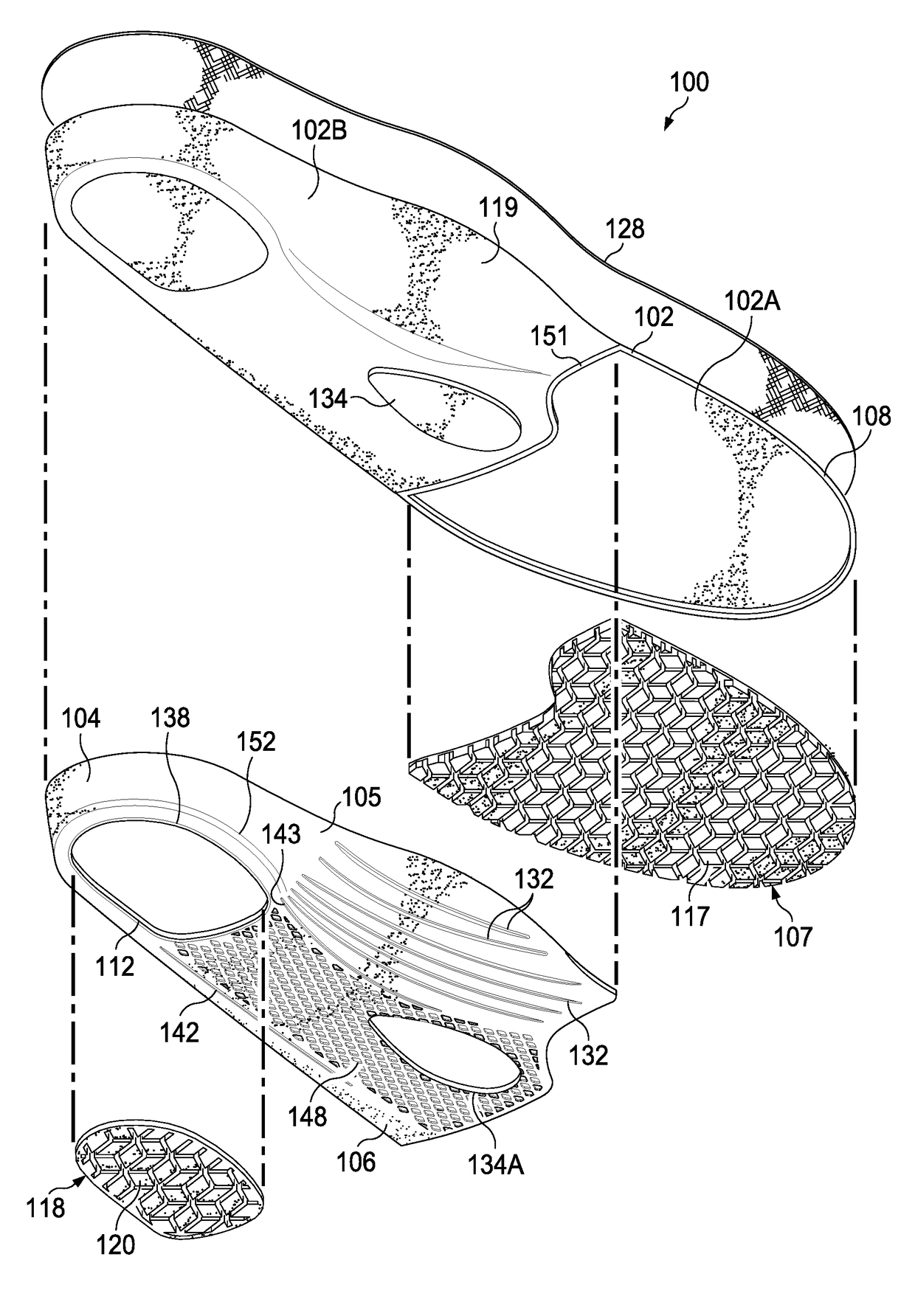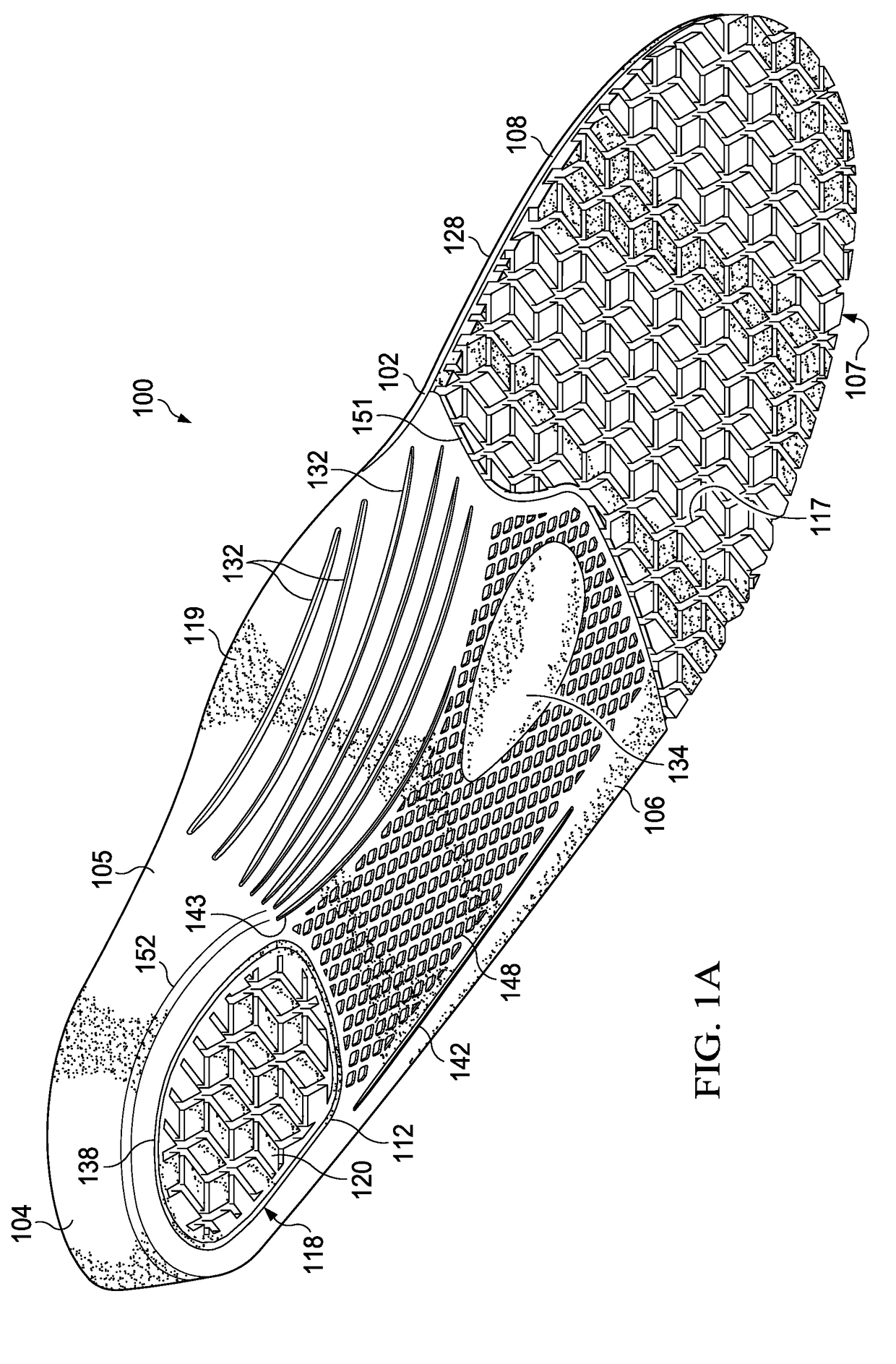Contoured Support Shoe Insole
a shoe insole and support technology, applied in the field of shoe insoles, can solve the problems of inability to make such insoles for the general public, high cost of custom made insoles, and inability to meet the needs of the general public, and achieve the effects of preventing supination, and reducing the risk of supination
- Summary
- Abstract
- Description
- Claims
- Application Information
AI Technical Summary
Benefits of technology
Problems solved by technology
Method used
Image
Examples
Embodiment Construction
[0031]In accordance with principles of the present invention, the present invention is a shoe insole has a base bottom (shoe contact) surface with cushioning and supporting elements in the arch, metatarsal, forefoot and heel areas, and a top (foot contact) surface with cushioning and supporting elements in the heel and metatarsal areas. The shoe insole fits securely in the bottom of a user's shoe to provide support and cushioning to the user's foot.
[0032]Referring to FIG. 1A, 1B and 2, these views are perspective and top views of the bottom surface (shoe side) of an insole 100 according to the invention. The insole 100 extends from a heel end (proximal) to a toe end (distal) and has a medial border or side on the arch side of the foot, connecting said toe end to said heel end along the arch side of the insole and a lateral border or side on the other side (opposite side from medial side) thereof, connecting said toe end to said heel end on the other side of the insole.
[0033]The inso...
PUM
 Login to View More
Login to View More Abstract
Description
Claims
Application Information
 Login to View More
Login to View More - R&D
- Intellectual Property
- Life Sciences
- Materials
- Tech Scout
- Unparalleled Data Quality
- Higher Quality Content
- 60% Fewer Hallucinations
Browse by: Latest US Patents, China's latest patents, Technical Efficacy Thesaurus, Application Domain, Technology Topic, Popular Technical Reports.
© 2025 PatSnap. All rights reserved.Legal|Privacy policy|Modern Slavery Act Transparency Statement|Sitemap|About US| Contact US: help@patsnap.com



